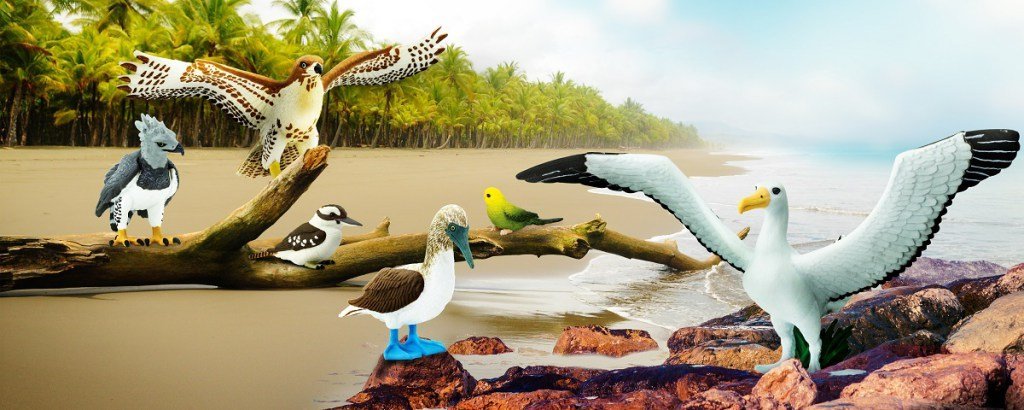
Happy Bird Day to You!
This day is for the birds…because it’s literally Bird Day! On this day we celebrate all things avian. From the smallest hummingbird to the largest eagle…this day’s for you! Let’s learn a little more about our fine feathered friends.
Did you know that birds are actually a subgroup of reptiles? In fact, some reptiles, like crocodiles, are actually more closely related to birds than they are to lizards. Scientists believe that feathers evolved from scales, and actually think the same thing about human hair and fur. But if you look close, you’ll notice that birds still have scales just like reptiles – check out their legs and feet!
Most birds use their feathers for flight, and the ability to fly is one of the most distinctive traits of birds, although mammalian bats can do it too. However, not all birds are capable of flight. Penguins, for example, cannot fly. Neither can ostriches, emus or cassowaries, which belong to a group of birds called Ratites. Some of the largest birds of all time could not fly, like the prehistoric predatory Gastornis, which could grow over six and a half feet tall!
The Gastornis is extinct, but there are still some huge birds out there today. The wandering albatross, for example, has the longest wingspan of any living bird, at over 12 feet long in the largest examples. The California condor isn’t far behind, with a nearly 10 foot long wingspan. The harpy eagle can weigh over 20 lbs., and its legs can be as thick as a human’s wrist, with talons as large as bear claws.
There is a great range of size in the world of birds, but that’s just the beginning of their diversity. Birds have a huge range of coloration in their plumage, from the rainbow lorikeet to the black and white anhinga. They are also highly specialized in their feeding habits, and this often leads to interesting variations in the style of their beaks. Spoonbills, for example, are quite aptly named with their flat beaks that they sweep through the water while searching for food. Flamingoes sift through the mud with their heads upside down, using their heavy bill to separate the shrimp and algae they eat. Pelicans dive into the water from the sky, scooping up fish and other prey in their throat pouch.
Birds are among some of the most intelligent members of the animal kingdom. Everyone knows the stereotype of the wise old owl, but the smartest birds are actually corvids (like ravens) and parrots and parakeets. These animals have been observed using tools and engaging in complex social behavior. Crows, for example, use sticks to get insects out of logs. Older animals then teach this behavior to younger birds. Macaws have also been shown to understand the idea of “object permanence”, which is the concept that items continue to exist even when not in an individual’s field of vision.
We hope you learned something new about birds on this Bird Day, and you can check out our Wings of the World Collection and always learn more in the bird section of our SafariPedia.
Bernie’s Bonus Fun Fact: Bird bones are hollow and contain air pockets to help keep them lightweight for flight. A bird’s total feathers can weight two to three times as much as its skeleton!




 Facebook
Facebook
 Twitter
Twitter
 Instagram
Instagram
